Panasonic Viera TX-32LZD81 32in Freesat HD LCD TV Review
Panasonic Viera TX-32LZD81 32in Freesat HD LCD TV
Panasonic squeezes a Freesat HD tuner into this 32in TV - perfect if you want HD content but are short on space.
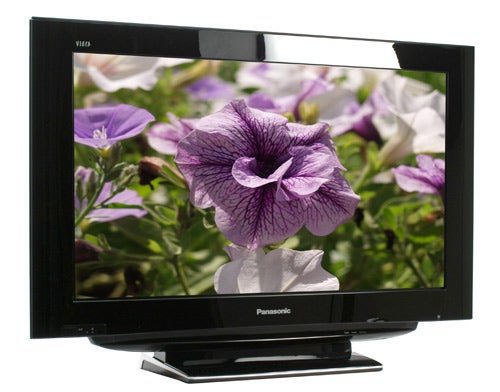
Verdict
Key Specifications
- Review Price: £739.99
Panasonic has been on something of a roll lately. Not only has it been consistently producing great plasma TVs at astonishingly affordable price points, but it has also managed to offer something that other manufacturers don’t – an integrated HD tuner. Back in May I got a sneak preview of Panasonic’s PZ81 series, with its integrated Freesat HD tuner, and I was pretty impressed. My initial thoughts were borne out when John reviewed the Panasonic Viera TH-46PZ81 and bestowed it with a Recommended award.
Now I have one of Panasonic’s brand new Freesat HD equipped LCD TVs, so it’s time to see how it measures up to the plasmas. Panasonic has always had a very black and white view of LCD vs. plasma – it used to be that LCD was offered up to 32in, then plasma took over from 37in upwards. That changed recently, due to the fact that the smallest Full HD plasma that Panasonic offers is 42in (shrinking plasma chambers is no easy task), so the company started producing Full HD 37in LCD screens to fill the gap. But what I’m looking at here is the TX-32LZD81, which is a 32in screen, albeit one that also sports a Full HD 1,920 x 1,080 resolution. 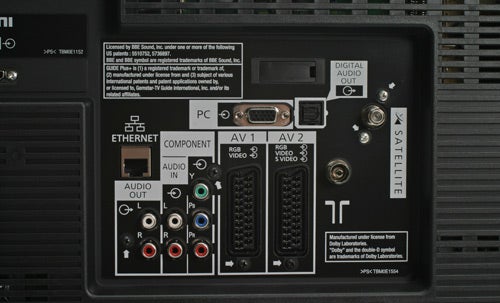
It’s fairly safe to say that this is one of the most feature rich 32in LCD TVs you’re likely to find, from any manufacturer, and if you really are pushed for space, the TX-32LZD81 provides a feature set that far larger screens would be envious of. Despite its relatively small dimensions, Panasonic hasn’t skimped on connection options. You get no less than three HDMI 1.3 ports, a set of component video jacks, two RGB SCART sockets, S-Video, composite and D-Sub for hooking up a PC – the maximum PC resolution is 1,366 x 768, rather than 1,920 x 1,080 though. There’s also an SD Card slot, for viewing your digital photos directly on the TV. Another welcome addition is an Ethernet port, which is mandatory for any Freesat HD device, and should allow viewing of the BBC iPlayer on the TX-32LZD81 in the not too distant future.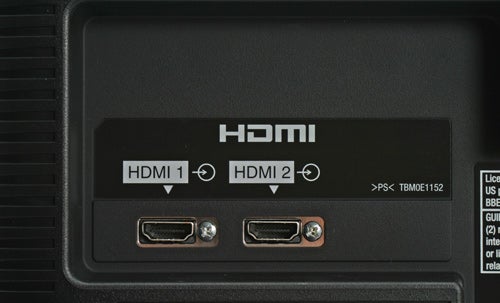
Design wise, the TX-32LZD81 looks tastefully sleek and simple. The bezel and stand are both finished in glossy black, as is the norm these days. There’s little to break up the simple lines of the TX-32LZD81 either, with a single power button mounted in the bottom left corner of the bezel, and all the “on TV” controls set down the right edge, behind the screen. The only downside is that the bezel is quite wide and makes the screen look far smaller than it actually is.
Setting the TX-32LZD81 up is an absolute breeze. When you power the set on for the first time, it will automatically tune all the internal tuners – Freesat HD, Freeview and analogue. Once all the channels have been found and stored, the TV will then ask you if you’re at home or in a shop. This is a great feature, since many TVs leave the factory with settings that suit a shop floor, but look awful in the living room, so this simple selection means that consumers don’t have to manually calibrate their TV, although a bit of manual tweaking will certainly still help.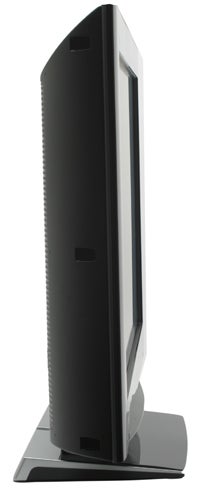
Even though I’m a long term Sky HD user, I’ve got to say that there’s something really nice about having a high definition tuner built into a TV, rather than having to use a set top box. Of course you’re only getting a very limited amount of HD content, but the BBC HD service looks every bit as stunning as it does over Sky. Heroes for instance looks breathtakingly sharp and detailed, even though the programme itself hasn’t really improved since the woefully bad second season. It’s also worth remembering that Freesat HD is the only way to receive ITV HD, and if you’re a football fan, you’ll know just how important that is. With ITV showing some of the key Champions League and England matches, most viewers are subjected to God awful transmissions where it’s hard to even make out which team has the ball. But if you have Freesat HD, you can watch all those matches in glorious high definition, and believe me, it makes all the difference.
On the whole the TX-32LZD81did a very good job of rendering the pristine high definition images that its Freesat HD tuner received. There’s certainly no lack of detail on offer – even though many would argue that Full HD resolution isn’t worthwhile on such a small screen, there’s still no substitute for a 1,920 x 1,080 image mapped pixel for pixel. The result is a pin sharp picture, that’s enhanced by the fact that the pixel pitch on a screen this size is considerably smaller than on a larger TV.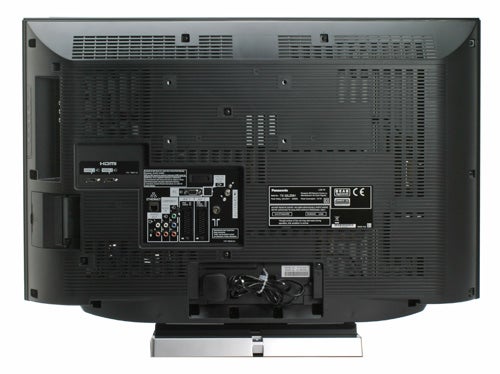
Of course, to make use of Freesat HD you’re gong to need a satellite dish installed, which will cost around £70 if you don’t already have one. But if you’re already a Sky customer, you should just be able to run a cable from your existing dish – assuming you’re not already using all four LNBs. Even if you’re not a Sky customer, you may already have a dish installed at your house thanks to a previous tenant, which is exactly what I found when I bought my house. Then it’s just a matter of connecting the cable that’s already there.
Don’t go thinking that this TV is only good with the pictures produced by its built-in HD tuner though, hook up a Blu-ray deck via one of the HDMI ports and you’re in for a treat. Firing up the brilliant Iron Man Blu-ray resulted in a far more cinematic experience than I would have expected from a screen this small. With the lights dimmed, and the action coming thick and fast, I barely remembered that I was watching a 32in screen. In particular, the scenes in the desert were beautifully rendered, with impressive amounts of detail, despite the bright, oversaturated nature of the setting. Darker scenes, like the Stark’s arrival at his party, and the fight at the end of the movie are also handled well, although the TX-32LZD81 is no match for one of Panasonic’s plasma screens when it comes to black levels.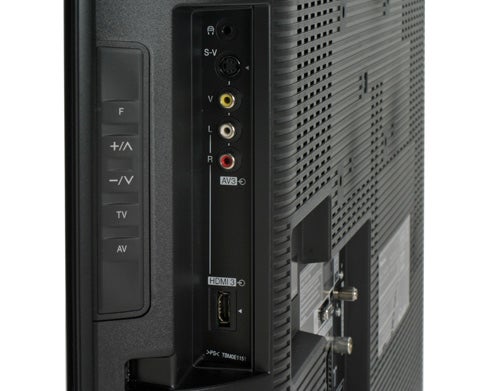
I must point out that I’m not saying that the black levels are poor on the TX-32LZD81, because they’re not. Panasonic quotes a contrast ratio of 10,000:1, which is obviously a result of dynamic backlight technology. Panasonic calls its dynamic lighting Intelligent Scene Controller, and I have to say that it’s one of the better implementations that I’ve come across. Sometimes a dynamic backlight can cause more problems than it resolves – the most common issue being a clearly discernable drop or jump in brightness as the system tries to cope with changes in contrast. The TX-32LZD81 exhibited no such issues, although it’s also worth remembering that this kind of problem is always more noticeable on larger screens.
Colours are also well resolved, with skin tones especially looking very natural and lifelike. This resulted in HD close up shots looking particularly realistic, with none the slightly sickly palls that afflict lesser TVs. Even more impressive is the fact that the TX-32LZD81 managed to avoid looking over saturated even when fed low quality SD sources via its Freeview tuner, a feat that shouldn’t be underplayed. And while I’m on the subject of standard definition, the TX-32LZD81 put in a sterling performance in this department too, even when faced with the truly awful, low bit rate fare that haunts the corridors and rooms of Freeview.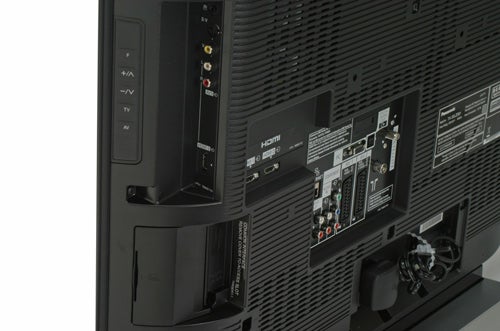
Like most flat screen TVs these days, the TX-32LZD81 has its speakers hidden away beneath the screen, which makes for a sleek, uncluttered look, but also limits the size of the speakers that can be employed. That said, even in the aural department, this TV does a pretty good job. OK, so you’re not going to get all the shock and awe that would accompany a proper surround sound setup, but for general TV and movie watching, the sound is loud and clear enough to satisfy.
Unfortunately, despite sporting a snazzy Freesat HD tuner, the TX-32LZD81 lacks a couple of the high end features seen on the TX-32LZD85. The most prominent omission is Panasonic’s generally impressive 100Hz processing, and the Motion Focus Technology that goes along with it. The combination of these two featured ensured that the TX-32LZD85 turned in a sterling performance when it came to maintaining the resolution of moving objects, like players on a football pitch, or the football itself for that matter. It’s somewhat unfortunate that this TV, that lends itself to watching ITV footie in glorious high definition, lacks the technology to ensure totally smooth motion. That’s not to say that the TX-32LZD81 handles motion badly, just that the addition of 100Hz processing and Motion Focus Technology would have made it that bit better. I guess what I’m saying is that I would have liked to have seen all the features of the TX-32LZD85, coupled with a Freesat HD tuner – but I guess that would have pushed the cost up a fair bit.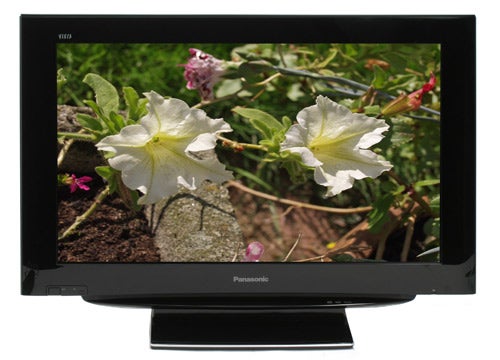
Talking of price, there seems to be quite a wide range on offer from online retailers, although I managed to track down one store selling the TX-32LZD81 for £740 including VAT and delivery. That’s quite a bargain compared to some of the other prices out there, and also represents good value considering what you’re getting for your money. Given its size, many will consider the TX-32LZD81 as a second TV, and will probably already have Sky installed, thus making it easy to hook up the Freesat HD tuner. Then with Sky HD in one room and Freesat HD in the other, you really will have the best of both worlds.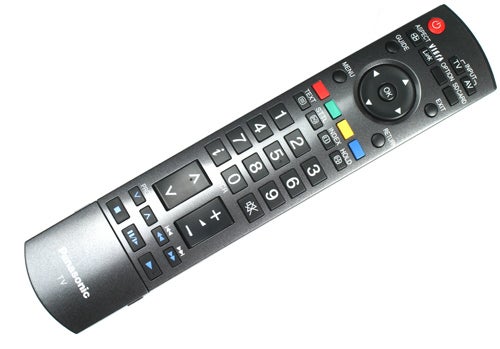
”’Verdict”’
Having Freesat HD built into a TV makes sense, it’s that simple. It allows you to watch HD content without the need to invest in any other hardware, and that in itself is reason enough to want one. Add to that the fact that the only way you can watch ITV HD at present is through Freesat, and many football fans will be keen to sign up straight away.
When you take Freesat HD out of the equation, this is still a pretty good all round 32in LCD TV, and I can’t imagine too many people being disappointed with its performance. However, I still would have liked to see Panasonic’s 100Hz processing included in the feature list, as well as Motion Focus Technology. Even without those two components though, it would be churlish to not give this TV a full 10 for features, since no other 32in TV exists with a built-in high definition tuner (at least not in the UK). Ultimately, Panasonic has produced yet another great all rounder.
How we test televisions
We test every TV we review thoroughly over an extended period of time. We use industry standard tests to compare features properly. We’ll always tell you what we find. We never, ever, accept money to review a product.
Trusted Score
Score in detail
-
Features 10
-
Value 9
-
Image Quality 8
-
Design 8
-
Sound Quality 8

